By John Domagalski
Activity at Japanese air bases in the northern Solomon Islands reached a fever pitch as the South Pacific sun rose on the morning of April 7, 1943. The distinctive sound of roaring aircraft engines filled the air at fields bearing the names of Ballale, Kahili, and Buka. All of the bases were on or near the island of Bougainville. Scores of planes marked with the red circle insignia of the rising sun were soon taking off. The aircraft combined into four groups while circling before turning south.
Perhaps unknown to the Japanese pilots, however, the planes were under careful watch by Allied coastwatchers. The agents quickly reported the developments to American authorities on Guadalcanal.
The operation was the first act of a massive air offensive against American positions in the Solomon Islands and New Guinea directed by Fleet Admiral Isoroku Yamamoto. The attacks were dubbed the “I” Operation and would hit four key target areas over the course of a week. The admiral ordered the action to help reverse recent Japanese setbacks in the region and stall the forthcoming American advance that was sure to continue from Guadalcanal. The Americans had recently won control of the embattled island after nearly six months of heavy fighting.
The large Japanese formation numbered 177 planes—67 Aichi D3 Val dive bombers and 110 Mitsubishi A6M Zero fighters. The attackers were only slightly fewer in number than those in the first wave of the Pearl Harbor attack 15 months earlier. It was one of the largest Japanese air strikes mounted to date during World War II.
The air formation was bound for Iron Bottom Sound. The narrow body of water separates Guadalcanal and the nearby islands of Florida and Tulagi. Just a few months earlier, the area had been the scene of a bitter struggle. Now, however, it was a forward operating base for American forces preparing to advance up the Solomons chain. A stockpile of supplies and ammunition sat at Guadalcanal waiting for future operations. Tulagi harbor had been developed into a major naval base capable of housing warships as large as cruisers.
On the morning the Japanese air attack took off, LST-449 (Landing Ship, Tank) was slowly plodding toward the Guadalcanal area. The vessel was under the command of Lieutenant Carl Livingston. It was near the end of a voyage that had begun at Espiritu Santo in the New Hebrides. A small landing craft designed to carry tanks in coastal waters and an assortment of cargo including some bombs, its heavy load consisted of army troops and naval officers bound for duty in the Solomons.
Essentially a large landing craft, LST-449 was designed to haul tanks, vehicles, and personnel over the open ocean directly to beachheads. Spanning more than 300 feet in length and measuring 50 feet wide, it displaced 1,625 tons empty. The slow speed—generally less than 10 knots—earned the class of ships the deserving nickname of “large slow targets.” The vessels’ few weapons were an assortment of light guns for antiaircraft defense.
Among the passengers aboard LST-449 that day was Lieutenant (j.g.) John F. Kennedy. It was the end of a long trek to the South Pacific for the young naval officer. He came from a wealthy Massachusetts family and his upbringing included private schools and a college degree from Harvard. The patriarch of the family, Joseph P. Kennedy, served a stint as the American ambassador to Great Britain. An older brother, Joe, was serving in the Navy as a pilot.
Despite having a bad back, the younger Kennedy was able to enter naval service in late 1941 through the help of an officer who had served as the naval attaché in London when his father was ambassador. He spent time in Washington, D.C., at the Office of Naval Intelligence and in Charleston, South Carolina, before attending Naval Reserve Officers Training School in Chicago. The school was a crash course for recent college graduates, delivering the basic responsibilities of a naval officer.
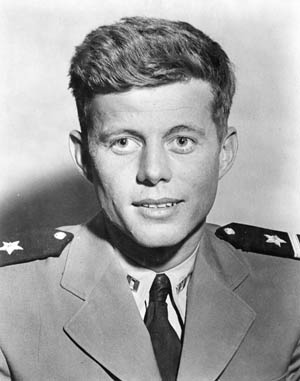
Kennedy volunteered for PT-boat duty while in Chicago. The small, fast boats had gained national attention when Lieutenant John Bulkeley evacuated General Douglas MacArthur and his family from the Philippines in early 1942. The PT-boat service had since been expanded and offered the alluring opportunity for action and a seagoing command. Kennedy next went to the Motor Torpedo Boat Training Center in Melville, Rhode Island. After graduation he was ordered to remain at the facility as an instructor.
Like many men in uniform at the time, however, Kennedy wanted to get into the war. His chance came on February 23, 1943, with orders to report to Motor Torpedo Boat Squadron 2 operating in the Solomon Islands. Kennedy rode the transport Rochambeau out of San Francisco to the South Pacific before boarding LST-449 for the final run to Tulagi.
Kennedy would eventually command PT-109. He was destined to become a war hero for saving some of his crew after the boat was rammed and sunk by a Japanese destroyer. But on April 7, 1943, as the LST slowly plodded toward Guadalcanal, Kennedy was just another young officer serving thousands of miles away from home.
Japanese officers expected a large bounty of targets to be waiting for their pilots in the waters around Guadalcanal. A morning intelligence report placed 12 warships and 14 transports in the immediate area. The targets were indeed plentiful. A force of American cruisers and destroyers, readying for a voyage north to bombard Japanese land positions, slipped out of the area before the attackers arrived, but a number of other Allied vessels remained. The nearly three dozen vessels in or near Tulagi harbor included a PT tender, minesweepers, tug boats, and transports of various sizes. Across the sound near Guadalcanal were two naval cargo ships, two destroyers, and three merchantmen.
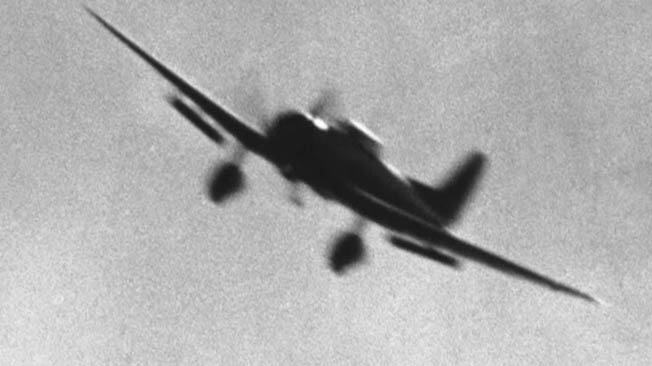
The coastwatcher’s early warning gave the American air commanders some time to prepare for the onslaught. At 2 pm the radar station on nearby Russell Island picked up the first sign of the intruders, prompting radio Guadalcanal to broadcast the first of two “condition red” reports. The coded messages warned that an air attack was imminent.
The alert sent crewman on ships across the area racing to man guns. The firepower, though, was limited as many of the cargo and auxiliary vessels only had small machine guns for air defense. Additional firepower was available on land in the form of two quadruple 40mm gun mounts positioned on the high point of Tulagi.
The best chance to thwart the enemy assault rested with the American airpower in the region. Bombers of various types were the first to take off, flying southeast to escape the impending attack. Seventy-six fighters then rose from Henderson Field on Guadalcanal to meet the approaching attackers. The force was a mix of frontline American aircraft, including, Lockheed P-38 Lightings, Grumman F4F Wildcats, Vought F4U Corsairs, Grumman F6F Hellcats, and Bell P-39 Airacobras.
The air battle began about an hour after the initial radar contact. The outnumbered American planes tangled with Zeros in a series of fierce dogfights over the approaches to the Guadalcanal area. The Val dive bombers roared past the melee into Iron Bottom Sound.
Fifteen bombers headed for the Kanawha just after 3 pm. The tanker was leaving Tulagi harbor escorted by the destroyer Taylor when it was hit by five bombs. The crew abandoned the burning ship as several smaller vessels closed to help. It was subsequently reboarded, taken under tow to the west side of Tulagi, and beached. Kanawha, however, did not survive the night, sliding into deep water and sinking by the stern without fanfare.
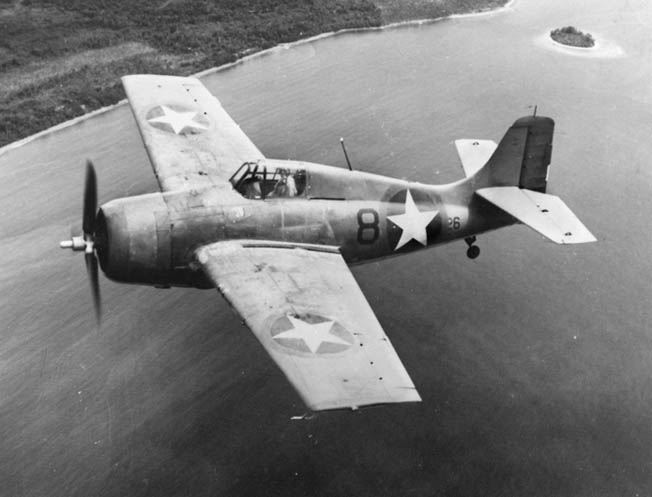
The New Zealand corvette Moa did not receive the urgent air raid warnings. It was fueling from the tanker Erskine Phelps in Tulagi harbor when the attackers arrived. The small warship quickly sank after taking two direct bomb hits. The missiles were apparently aimed at the much larger tanker.
A third tanker, positioned off Guadalcanal, narrowly escaped the furious attack. Tappahannock and the destroyer Woodworth started moving toward open water at the first sign of trouble. The pair managed to dodge seven Vals with slight damage from a few near misses.
Other ships made sure the attackers paid a heavy price. The PT tender Niagara and several small torpedo boats moored under jungle foliage in a nearby river were in a perfect position to fire on the Vals coming out of their dives. The ships shot down at least two and damaged several others.
At the height of the action a lone American Wildcat fighter piloted by Marine 1st Lt. James E. Swett chased the enemy through friendly antiaircraft fire. He shot down three Vals during their dives and four more over nearby Florida Island. With his plane out of ammunition and badly damaged, Swett made a safe water landing near Tulagi. The remarkable effort earned him the Medal of Honor for “extraordinary heroism and personal valor.”
The skies were still clear of enemy aircraft when LST-449 arrived off Togoma Point on the northern coast of Guadalcanal in the early afternoon. A local base officer soon came aboard to provide assistance—a routine procedure when a new vessel arrived in the area. Livingston remembered, “A number of transports and destroyers were observed leaving the area at high speed.” The radio operator then picked up the urgent “condition red” message.
A small boat was suddenly spotted heading toward the LST from Togoma Point. It delivered Marine Major Nichols. He reported aboard with orders to form a task force consisting of the destroyer Aaron Ward, LST-449, and LST-446. The group was to leave the area at once and head toward Espiritu Santo with Nichols in overall command.
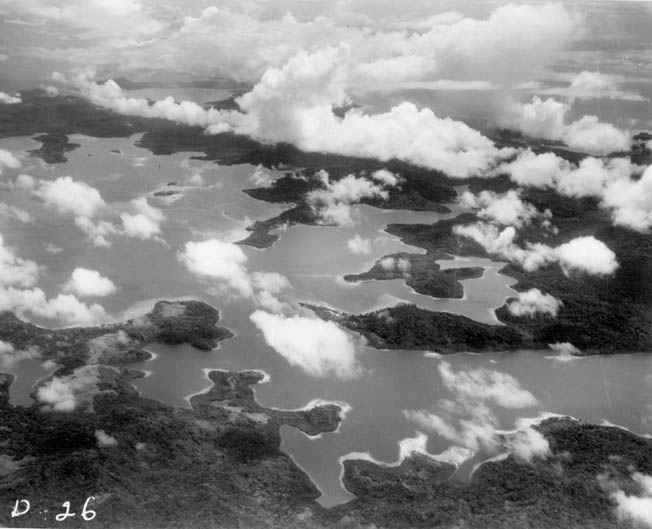
Livingston quickly scanned the area to find the other ships. “Neither the Aaron Ward or the 446 were in sight,” he noted. “The Aaron Ward was sighted a few minutes later and stood over toward this vessel at high speed.” It was about 2:20 pm. Several other small vessels were in the immediate area, but LST-446 never did appear.
The sailors aboard the slow LST-449 knew Aaron Ward offered a good measure of protection. The destroyer was almost 350 feet long and displaced nearly 2,400 tons fully loaded. It bristled with an assortment of guns, including a 5-inch main battery and 40mm and 20mm antiaircraft guns.
The destroyer and LST were positioned about a mile and a half off Togoma Point. The sky was partially overcast with low clouds. Aaron Ward signaled for the LST to follow its movements and begin zig-zagging when enemy planes approached. The pair then began to move eastward paralleling the Guadalcanal coast. Clearing the confined waters between Guadalcanal and Tulagi offered the protection of the open waters to the east and south.
The distant appearance of enemy planes to the north prompted Aaron Ward to begin zig-zagging and increase speed to 20 knots to widen the distance between the two vessels. The destroyer then began alternating its rudder from full right to full left.
Just after 3 pm, lookouts on Aaron Ward were able to clearly make out two distinct groups of aircraft. The first was a cluster of planes involved in a dogfight to the northwest in the vicinity of Savo Island. The second group, representing a greater danger, was heading south from Tulagi. It was the dive bombers searching for vessels to attack after slipping past the fighters. The gun director on Aaron Ward began tracking the second group of planes.
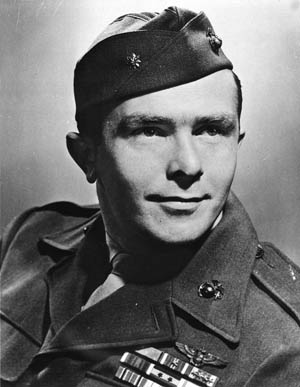
A group of Vals descended on the small flotilla less than 10 minutes after the aircraft were sighted. Livingston reported that his vessel was attacked by nine dive bombers. LST-449 was straddled by six bombs. “No bomb missed the ship by more than 75 feet,” Livingston later wrote. “Ship was shaken severely by each explosion. The nearest on the port quarter lifting stern and listing the ship to starboard about 20 degrees.”
As a simple passenger, Kennedy had no duties aboard the vessel. He was lying in his bunk reading when the attack began. Although the sharp movements of the LST aroused his attention, there was no announcement regarding any type of action. “Ship was maneuvered with full right and left rudder, rudder being put over when word was received planes were diving,” Livingston wrote of the action.
Further sharp movements prompted Kennedy to rise from his bunk to head for the deck. The ship’s 20mm cannons and 3-inch gun suddenly opened fire. The first near-miss bomb then splashed close aboard, throwing the ship into a 20-degree list. A cascade of water hit Livingston on the port wing of the bridge. Kennedy was nearly thrown off his feet. The passenger made it to the deck in time to see the subsequent near misses hit the water on both sides of the LST. Each explosion rocked the ship and sent a plume of water high into the air.
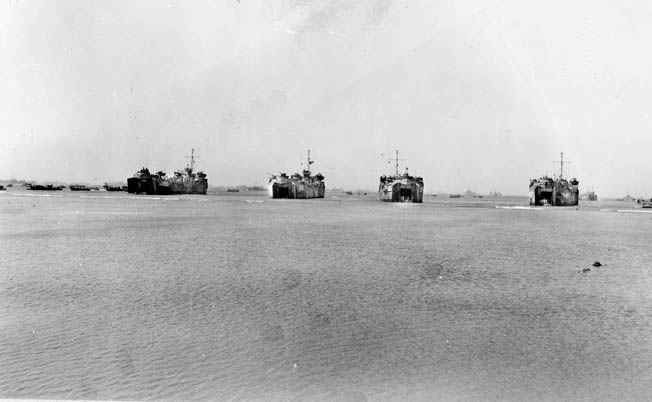
The 20mm guns aboard LST-449 expended 1,600 rounds of ammunition, while the 3-inch cannon fired off 13 shots. “Two planes were shot down and seen to crash in the water and a third was burning, leaving a trail of black smoke when last seen,” Livingston wrote of the engagement. After reviewing gunner accounts, the commanding officer was so certain his ship downed two enemy planes that he quickly asked for the tally to be made official. “It is requested official credit be given this vessel for the shooting down of two Japanese dive bombers,” he recorded in an action report. A direct hit would have surely sunk the boat, but no Japanese bomb would find LST-449 on that afternoon. The ship, however, did not escape damage. The near misses jarred the landing craft fastened to davits on the port side, damaged several bulkheads, and wrecked the port ballast pump. “Rudder believed to be out of line as steering gear has failed twice since bombing,” Livingston added. “Helmsmen continue to report difficulty with steering.”
The warship nearest to the LST was not as lucky. “When next seen the Aaron Ward was on fire aft and settling in the water,” Livingston wrote of his escort. The destroyer had taken a bomb hit to the after engine room, causing the loss of all electrical power to the 5-inch and 40mm guns. Two near misses caused flooding in the firerooms. Two more bombs landed close aboard the port side as the powerless ship drifted to a stop.
LST-449 stood near the stricken destroyer until the minesweepers Ortolan and Vireo arrived on the scene. An attempt to tow Aaron Ward to safety failed, and she later sank three miles short of Tulagi. Livingston pointed his ship in the direction of two parachutes observed falling from the sky shortly after the two rescue vessels arrived.
Kennedy was among a small crowd of curious passengers who intently watched as the LST approached a Japanese pilot in the water. A rescue party was positioned near the front of the ship. Taking no chances, Livingston stationed his executive officer on the wing of the bridge with a loaded submachine gun. The downed airman took off his lifejacket and began swimming away with one arm under the water at all times as the vessel closed for a rescue. He suddenly produced a pistol and fired two shots toward his would-be rescuers.
“He was liquidated,” Livingston simply reported. The second downed pilot could not be located. “Welcome to the South Pacific,” Kennedy mumbled to himself after witnessing the events.
The massive Japanese air strike on the Guadalcanal area on April 7, 1943, did not stall the American advance in the South Pacific. Fears of additional attacks, though, kept LST-449 at sea for five more days. The boat eventually pulled into Guadalcanal on April 12. All aboard had survived a close scrape with death.
Carl Livingston took satisfaction knowing that his largely inexperienced crew courageously discharged its duties in the face of a fierce enemy air attack. He had no way of knowing that the precious cargo he safely delivered was not only supplies, ammunition, and replacement soldiers, but a future president.
For John F. Kennedy, his arrival in the South Pacific marked the end of one long journey and the beginning of another. Less than four months later he would again be fighting for survival.
John Damagalski is a graduate of Northern
Illinois University and a resident of the
Chicago area.
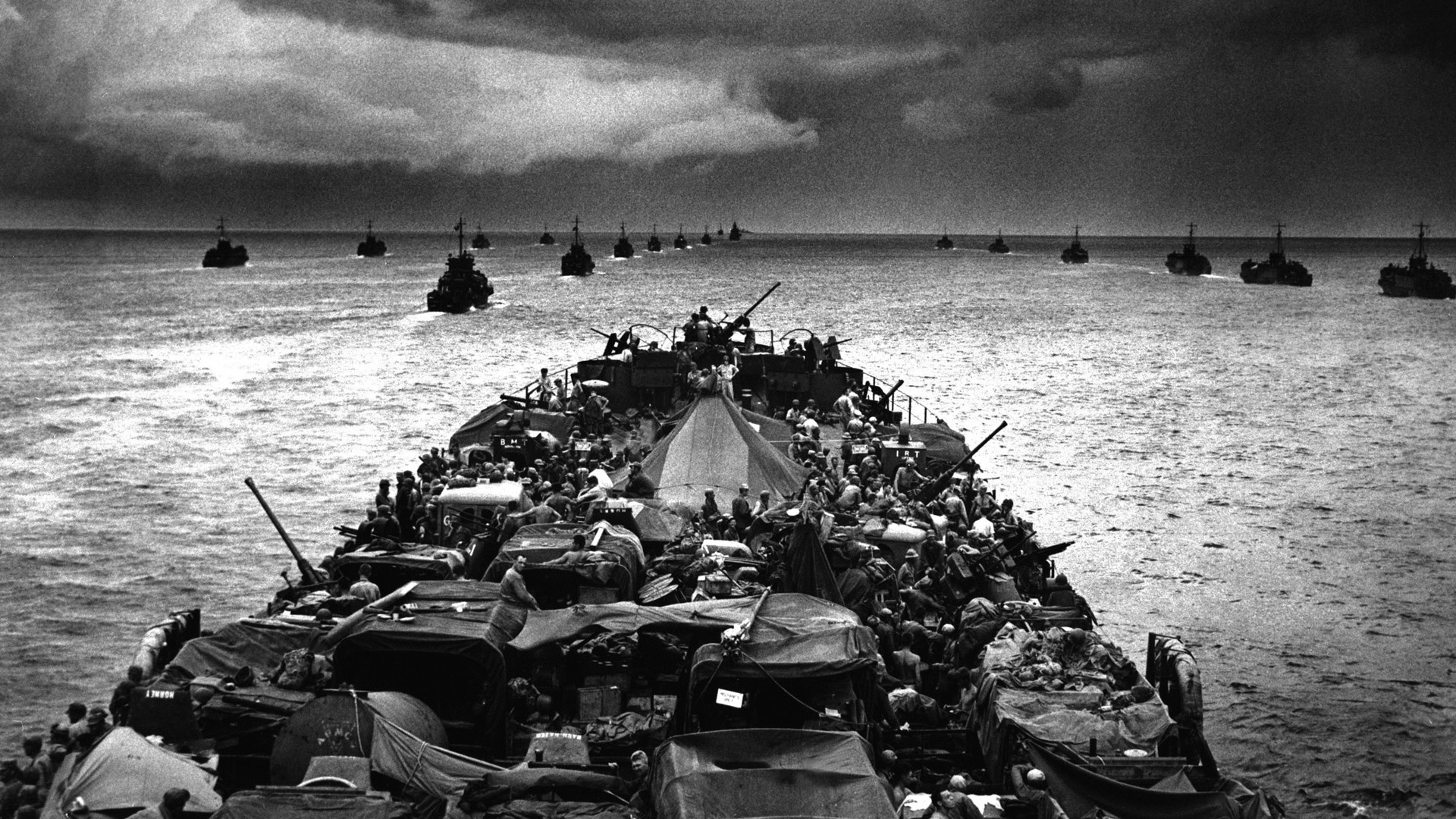
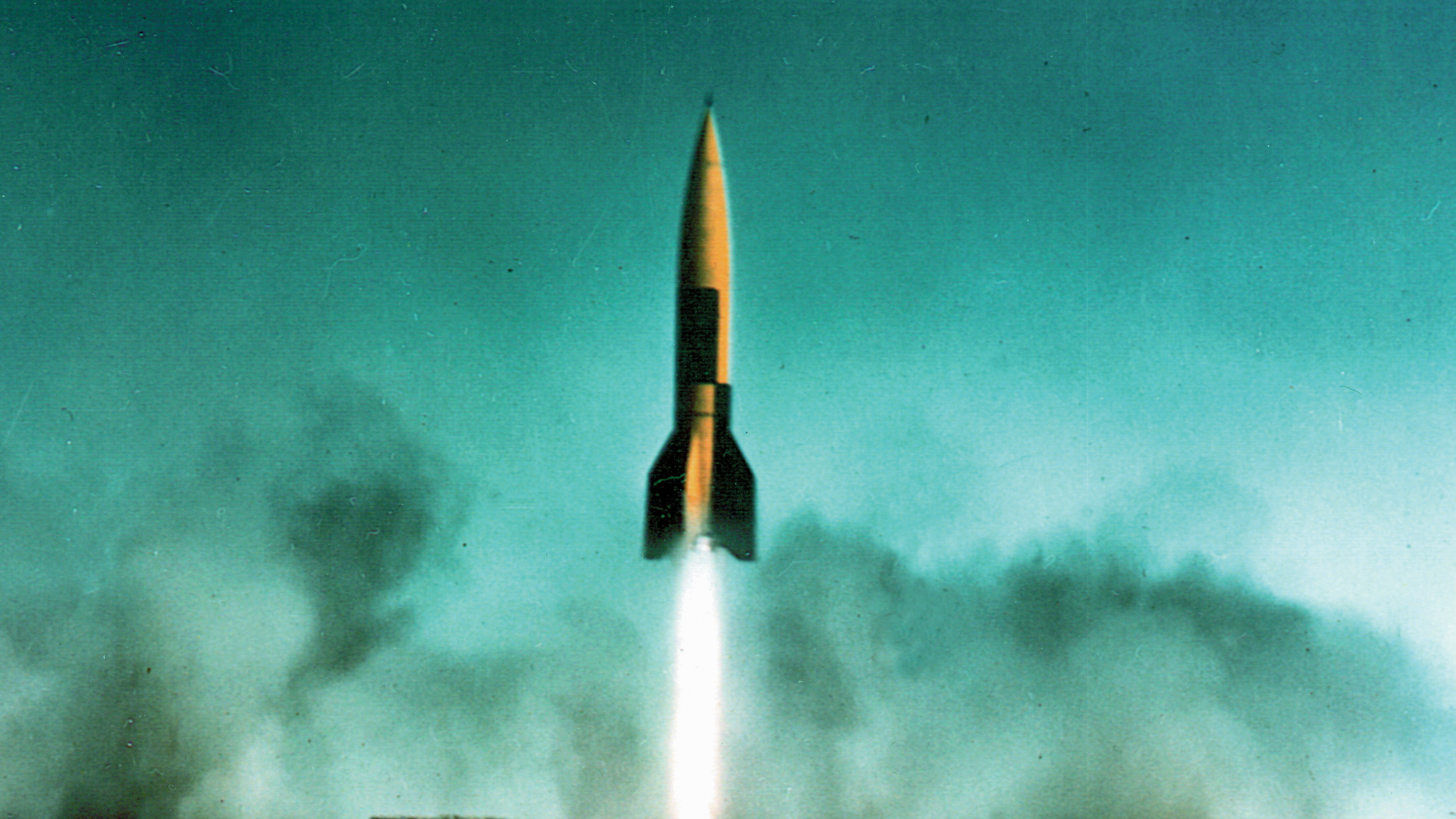
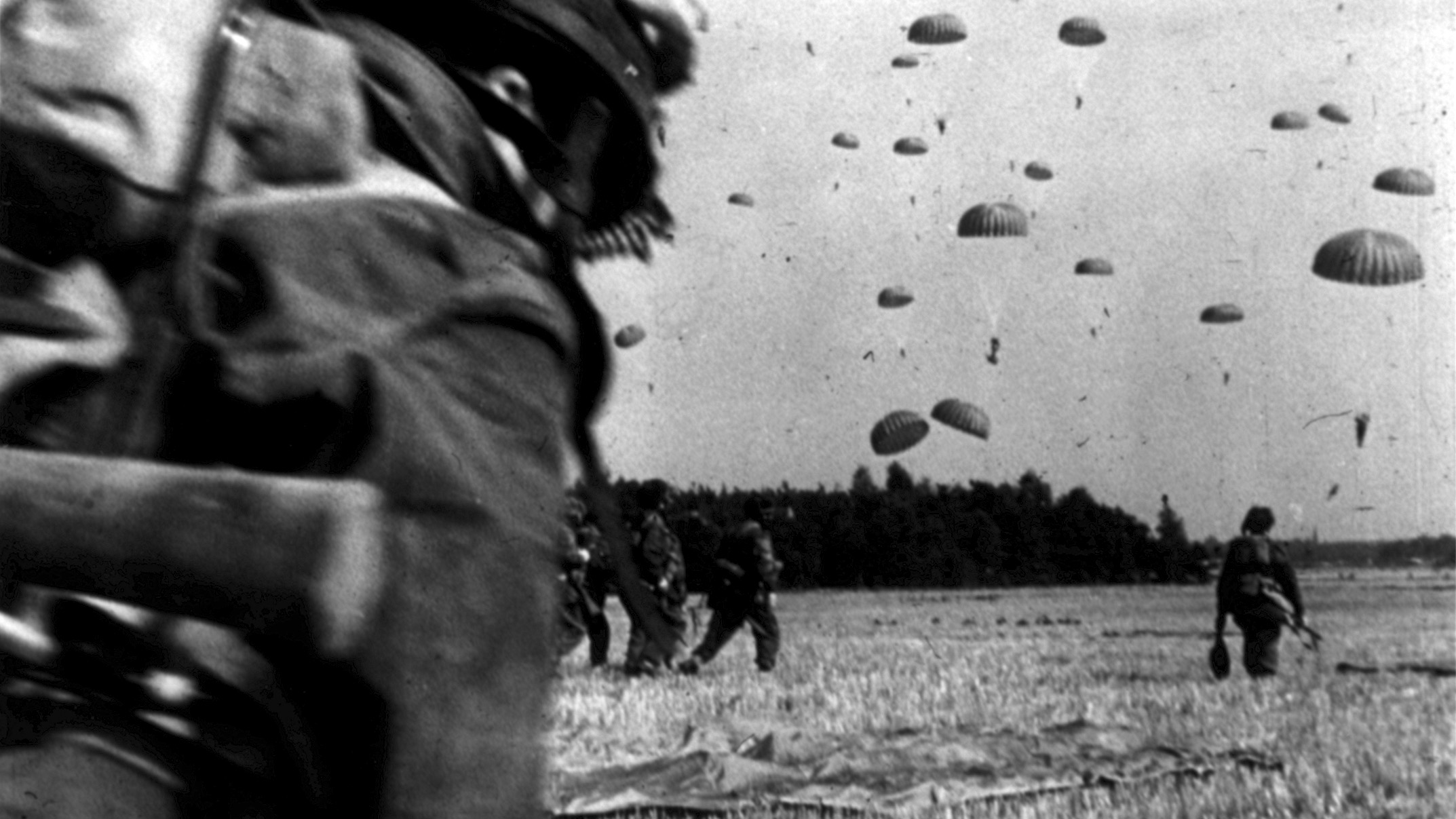
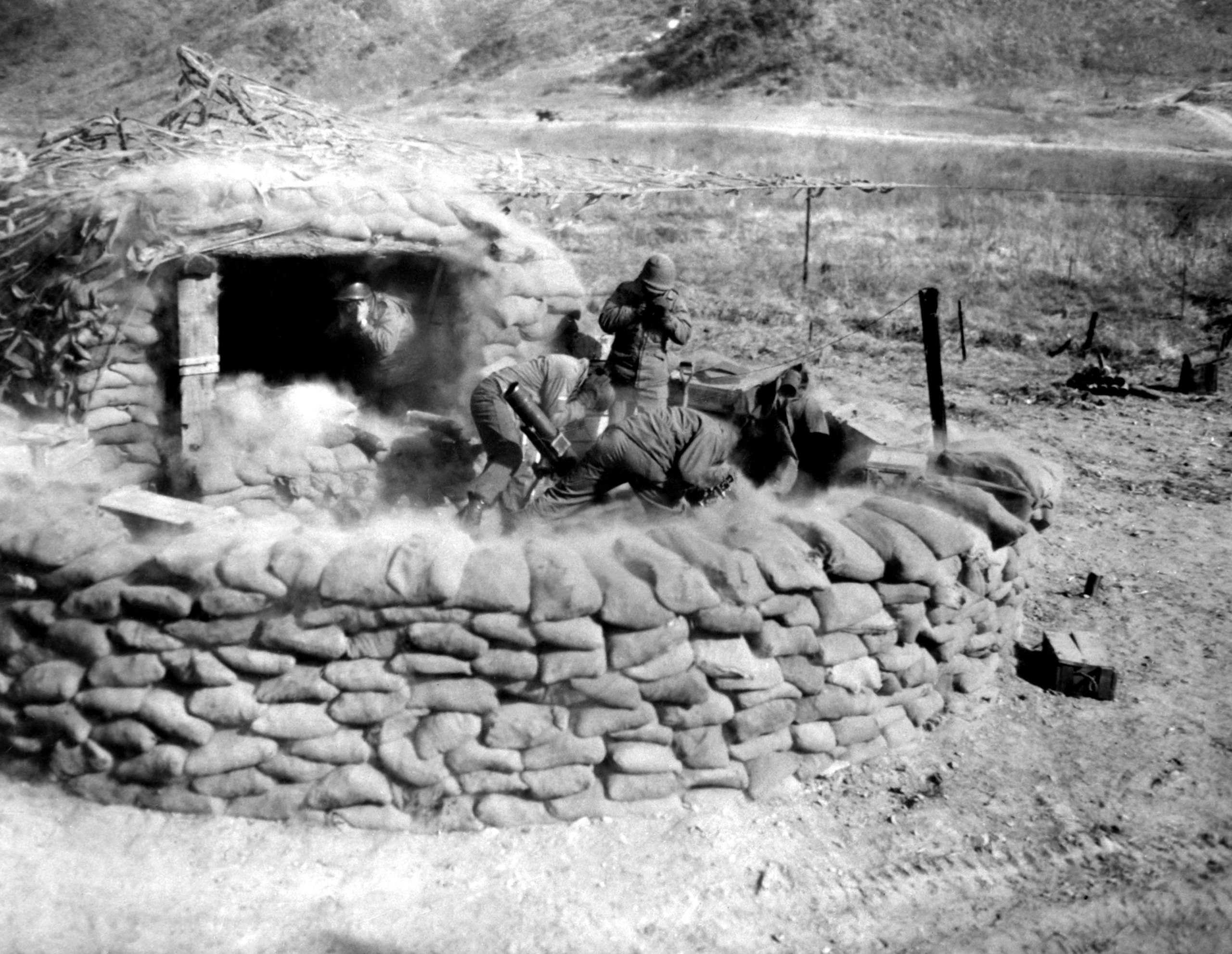
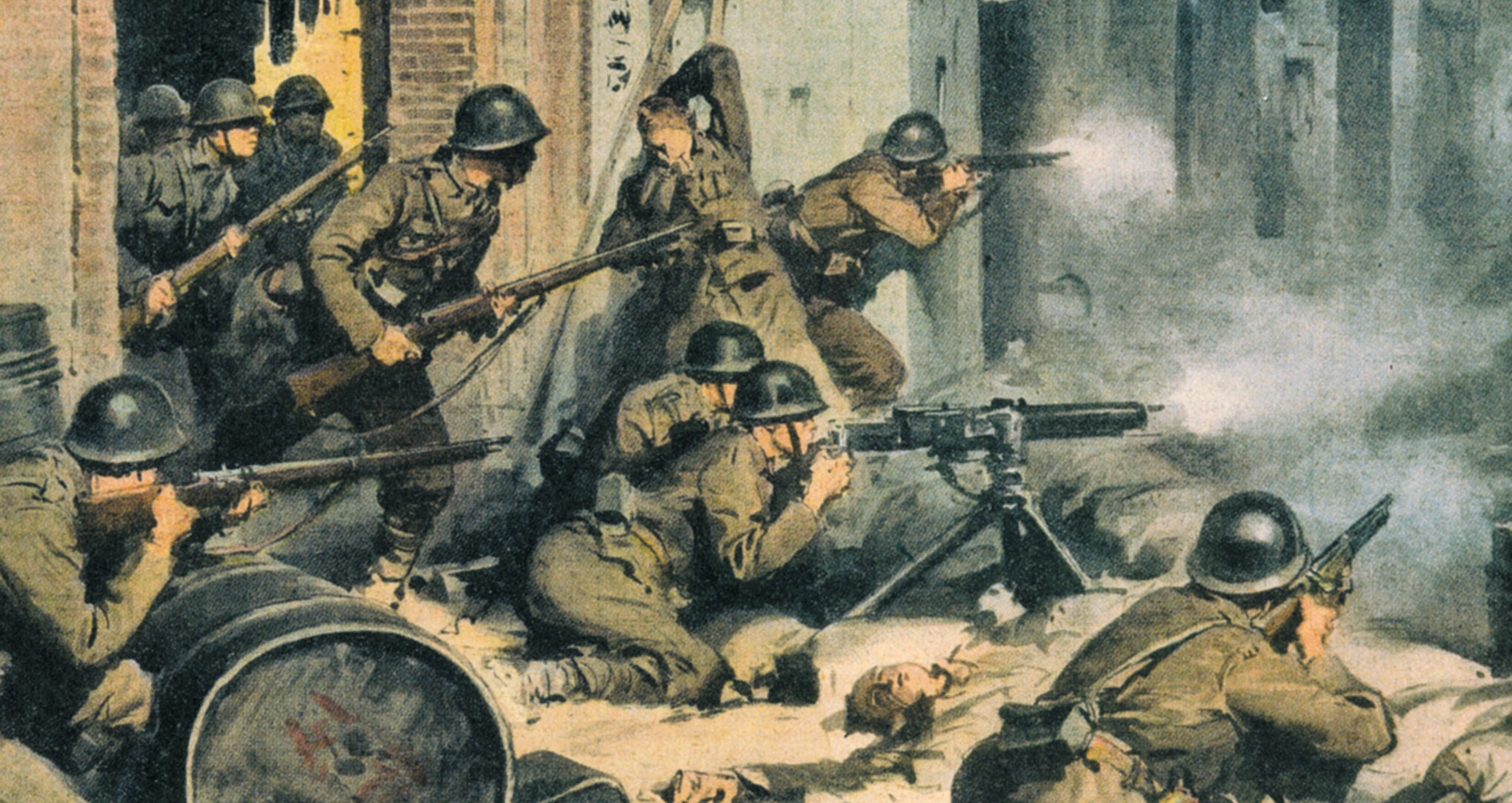
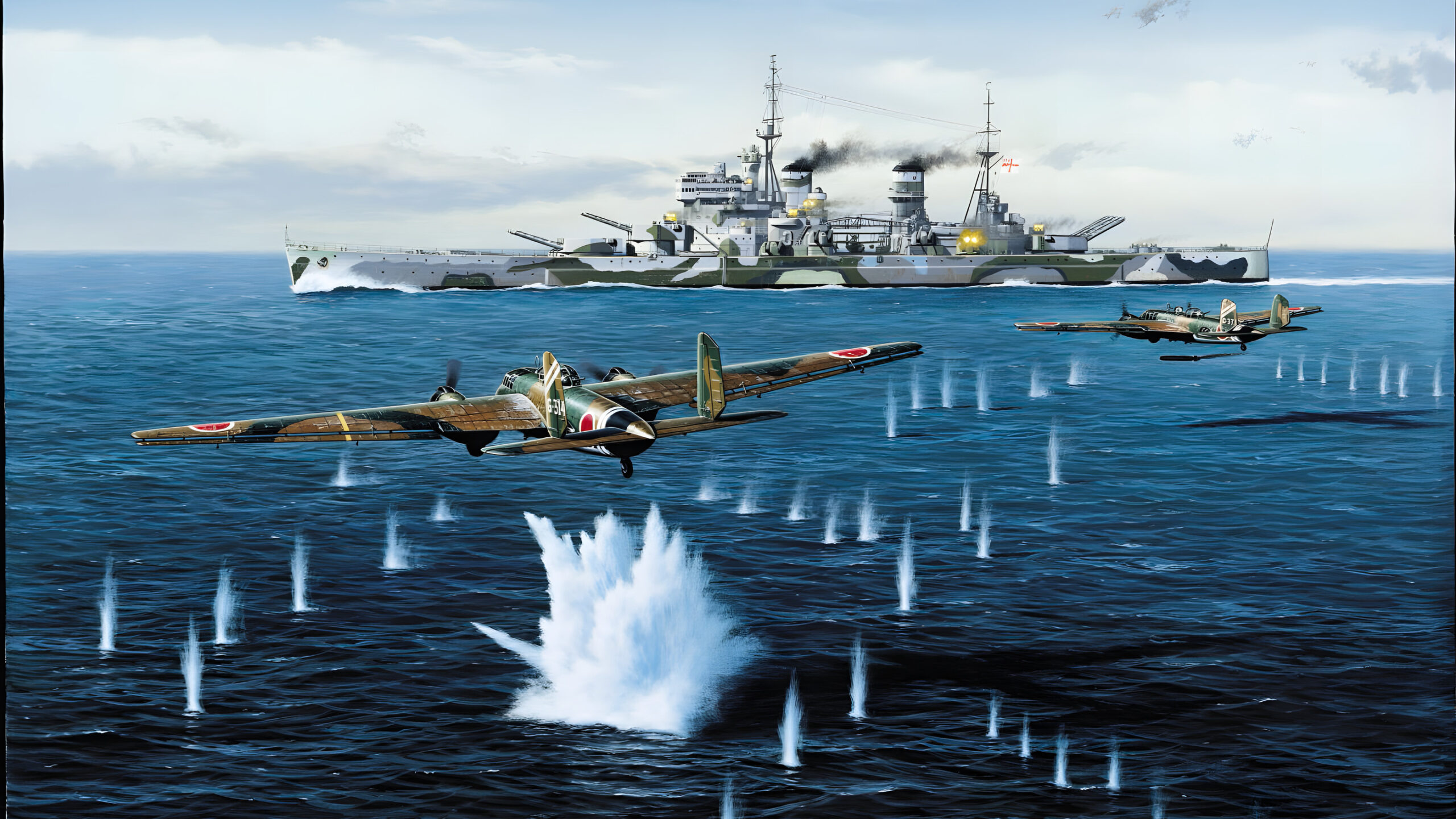
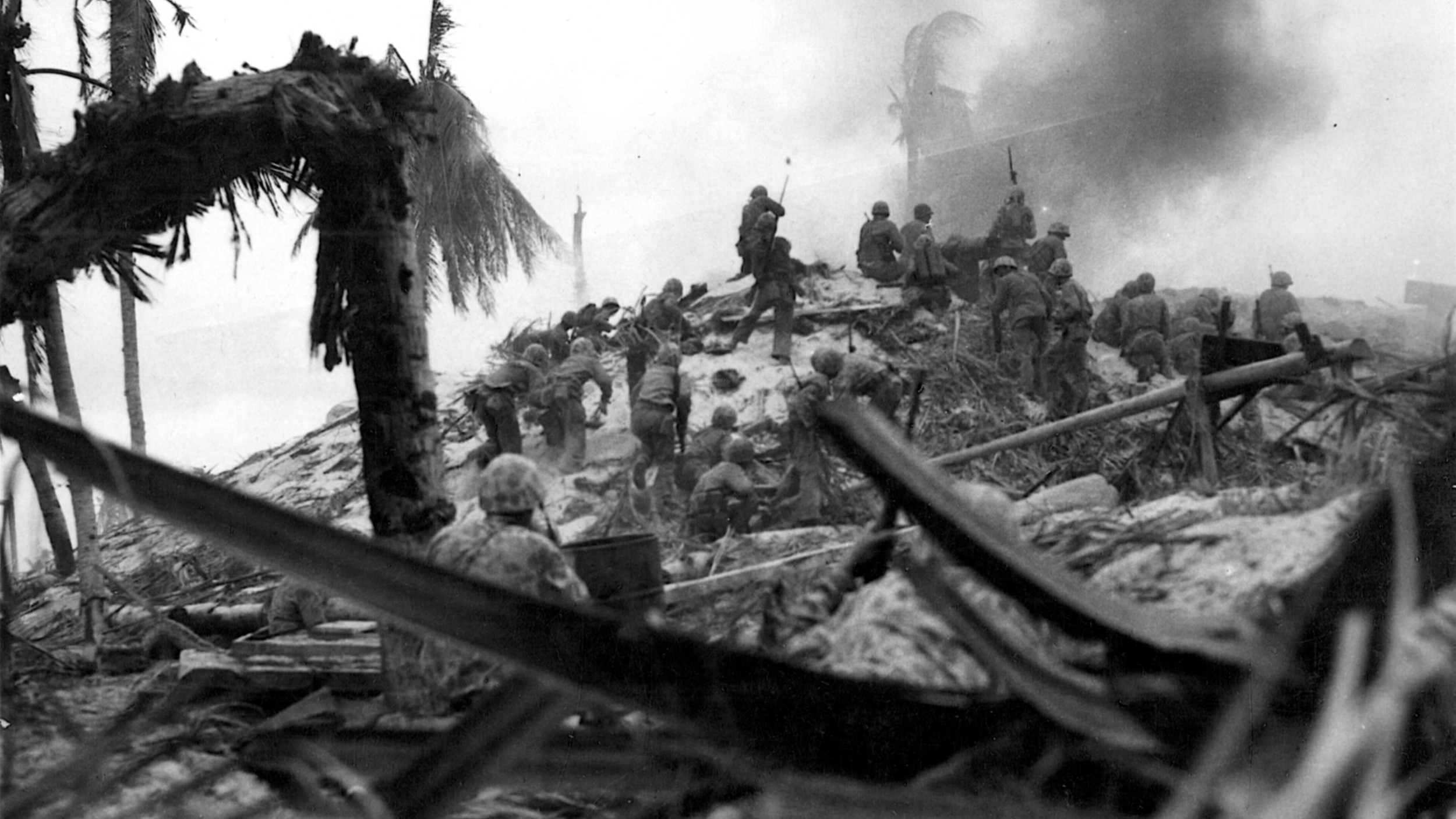
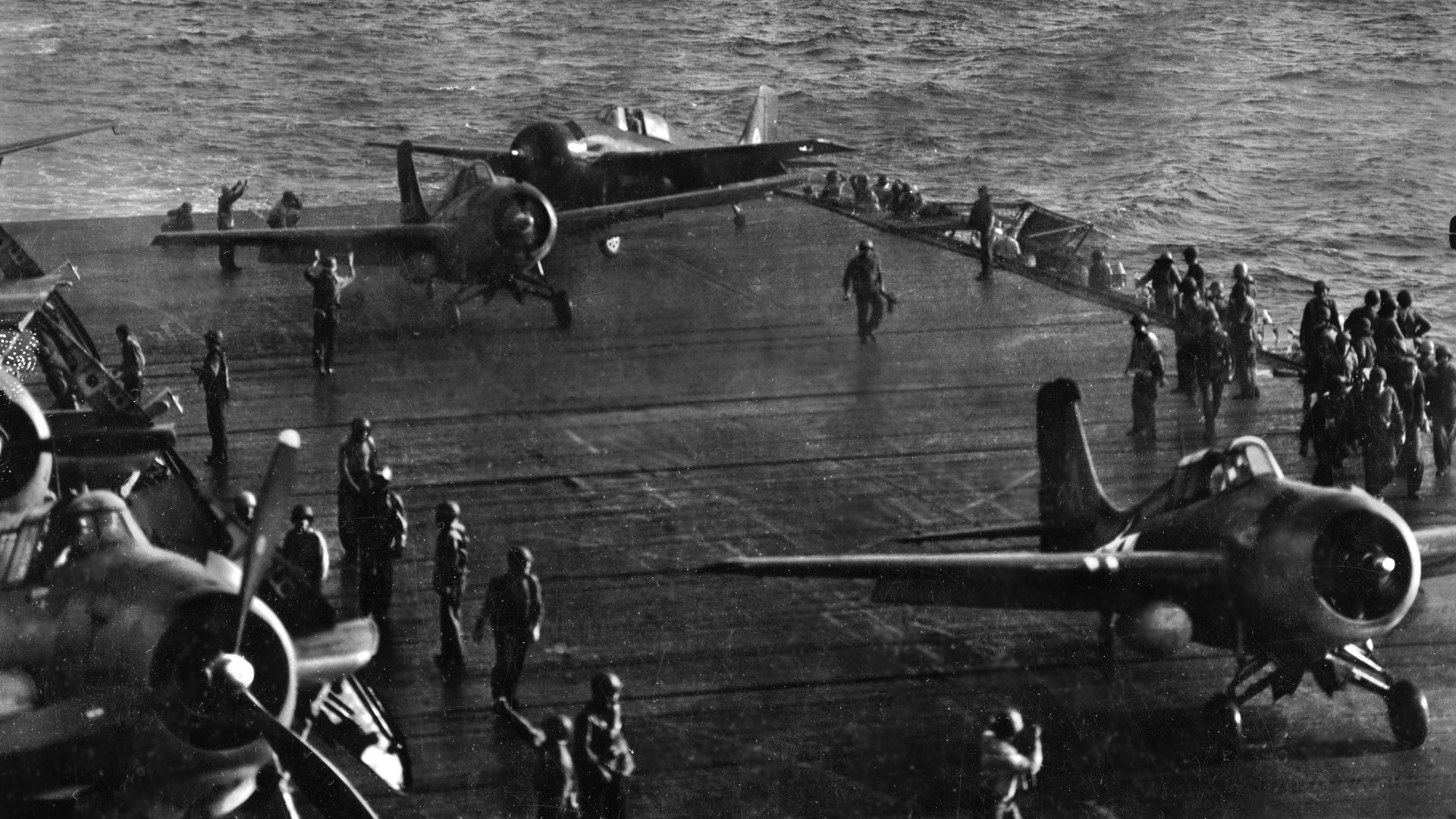
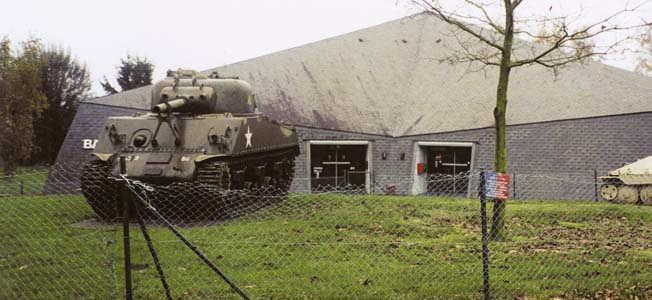
Join The Conversation
Comments
View All Comments